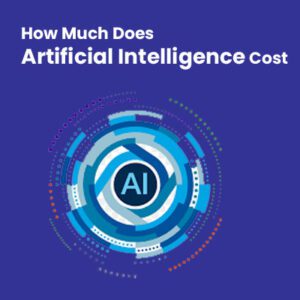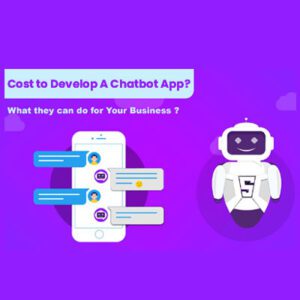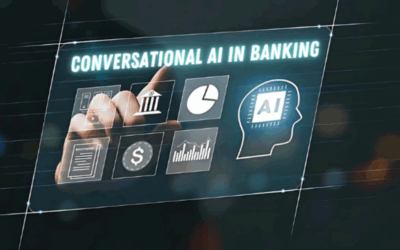The Impact of Artificial Intelligence In Insurance
Top Benefits & Use Cases of AI in Insurance Industry
Impact of Artificial Intelligence on The Insurance Industry
The Impact of Artificial Intelligence AI in Insurance
Artificial intelligence is changing the world in the best way possible. It began to take over several sectors, including insurance. The insurance and finance industry has brought radical transformation since the evolution and use of AI in insurance underwriting.
AI is altering conventional insurance operations and methods significantly. Due to the high volume nature of insurance firm activities, AI technology can indeed have a digital transformation effect.
Some of the insurance companies use Artificial Intelligence (AI) and machine learning (ML) technologies to automate certain stages of the claims management process and improve customer service. Furthermore, blockchain technology is being used for fraud detection.
Get a free quote for your project!
How Does AI Impacts Insurance Industry?
If you are an insurance and finance service provider, you must have to know about Artificial intelligence in insurance use cases and the impact of AI on the future of insurance services.
Here, we have compiled a list of top AI applications in insurance and the adoption of this Artificial intelligence in insurance use cases will bring automation to processes, optimize productivity, and aid insurers in delivering top-notch digital experiences to their clients.
1. AI for Digital Insurance Claiming
Claim processing is a core function of insurers. It consumes lot of time of resources in manually verifying the documents.
AI for digital insurance claiming is one of the best applications of the technology. Unlike messy paperwork’s, AI insurance services digitally captures required information from smart copies and makes insurance claiming faster and efficient. Intelligent AI algorithms will take over and automate all the early claiming processes with more accuracy.
2. Risk Management Use Case in Insurance
Artificial intelligence insurance aids insurance, investment, and finance companies identify fraudulent claims and financial risks faster. AI apps or AI solutions build a secure platform between customers and insurance executives to make the process seamless.
AI and ML algorithms will verify customer documents and find risk profiles in minutes. By validating the information regarding credit, financial stability, and personal behaviour, AI-powered insurance apps help service providers’ possible insights into risks.
3. AI In Insurance Underwriting
The use of AI in insurance for automating the manual process of underwriting will save a lot of time of resources and improves productivity. Leveraging the capabilities of AI, ML, and deep learning, intelligent AI insurance app gathers massive data from various resources like external applications, insurers, and customers. Later, this information will be automatically categorized by in-built segregation tools and stored in respective records.
So, such an automated process will aid insurers in analysing claim type, customer risk profile, deciding the insurance eligibility, etc. Hence, AI in insurance underwriting is the best digital solution to save time, automate the underwriting process, and prevent manual errors in data.
4. Artificial intelligence Insurance for Budget Panning
Price is central to customer decision-making for creating new budget-friendly insurance plans. Artificial intelligence in insurance use cases for determining competitor plans and creating customer-friendly plans is gaining popularity.
AI and ML applications in insurance analyse data and insurance offers of rivals and offer new term plans for existing customers. Such friendly insurance offers also help brands to grab the attention of new customers seamlessly.
This is the future of AI in insurance. Not only these, but the impact of AI on the future of insurance will also be far-fetched and move to new heights that you cannot imagine. AI insurance companies will become a leader in the industry, deliver top-notch automated performance over traditional companies, and be a quick responders to people who are interested to claim long-lasting life insurance coverages and many more profitable schemes.
So, ready to become a leading AI insurance company and stand out from the list of companies that follows traditional insurance processes.
Also Read: How Corona virus epidemic effect AI innovation in the insurance industry?
How Can Insurers Prepare For AI-driven Future?
Insurance sector is fueled by the widespread adoption and integration of deep learning, automation, and external data ecosystems. While none of us forecast what insurance industry will look like in the coming decade i.e. 2030, carriers can now take importance like below to prepare for AI-driven future.
Distribution:
The insurance purchasing experience is faster with less involvement of the customers and insurance executives. AI algorithms create risk profiles that provide sufficient information about personal behavior, thus reducing the cycle time to minutes or seconds to complete an auto, life policy or commercial insurance purchase.
Underwriting and Pricing:
By 2030, manual warranty/ underwriting for personal and small-business products will cease to exist throughout accident, life and property insurance. With a combination of deep learning and machine learning models built into the technical stock a large percentage of the underwriting is automated and supported so the underwriting process is reduced to a few seconds.
Pricing:
Price is central to customer decision making, while carriers innovate to reduce competition entirely on price. Advanced ownership platforms connect insurance companies and customers and provide customers with different aspects of the industry like value, features and experiences.
Price competition Exacerbates and razor-thin margins are the norm in some segments. In other segments, specialized insurance offers allow differentiation and margin expansion. Within the jurisdiction that embraces change, the pace of price innovation will be faster.
Pricing is based on data-rich risk, consumption, dynamic, and empowers people to make decisions about how their actions affect insurance, coverage, and most importantly, pricing.
Claims:
Claims processing will remain the primary task of carriers in 2030, but the head count partnered with claims will be minimized by 70% to 90% compared to 2018 levels. Advanced AI and ML algorithms increase the efficiency, accuracy, and routing of initial claims.
Claims for small-business insurance and personal lines are increasingly automated, allowing carriers to gain direct processing rates of over 90% and dramatically reducing claim processing time from days to minutes or hours depending on the task.
Also Read: How the Corona virus epidemic effect AI innovation in the insurance industry?
How Can Insurers Prepare For AI-driven Future?
Insurance sector is fuelled by the widespread adoption and integration of deep learning, automation, and external data ecosystems. While none of us forecast what insurance industry will look like in the coming decade i.e. 2030, carriers can now take importance like below to prepare for AI-driven future.
#1 Get Smart On AI-related Trends and Technologies
Although tectonic changes in the industry are tech-focused, addressing them is not at all the job of the IT team. Instead, board members and customer experience teams should invest resources and time to gain an in-depth understanding of technologies like AI and ML.
Also, insurers should understand market dynamics and discover smart solutions to address changing insurance needs. You should create plans that elevate your brand and your services on a global scale.
#2 Develop & Implement A Coherent Strategic Plan
Insurers need to develop a perspective on the areas in which they want to invest in AI to meet the business requirements and beat the competition. For example, AI is best suitable for automating processes, creating new connected infrastructure, or augmenting and modifying internal strategic capabilities.
#3 Create & Implement A Comprehensive Data Strategy
AI technologies work best in processing data and deriving results-driven insights. These insights will assist companies in creating data strategies that optimize the operational flow.
#4 Create A Good Talent & Technical Infrastructure
The insurance company of the future needs talent with the right mind and skills. The front-line insurance workers of the next decade will be in high demand and must be willing to work in a dynamic mix of creativity, technology, and constantly evolving machine-supported and semi-automated tasks.
AI insurance company needs to integrate the skills, technologies, and insights to provide unique customer interactions, and experiences and generate value from the AI use cases of the future.
Final Thoughts
Well, the future of AI in the insurance industry will be expected to leave tremendous growth opportunities to the service providers. And, future of AI in insurance is expected to draw unbelievable automation across the value chain of insurance processes as we discussed in this article.
AI Insurance Services is ready to disrupt the insurance field like never before for both customers and insurers. Artificial intelligence insurance provides seamless user experiences at affordable rates and erases the complex paperwork insurance processes in the coming years. Yes, we cannot imagine the impact of AI on the future of insurance.
Insurance firms need to save money and time by making their processes more effective and efficient. With AI-based solutions, the possibilities are endless, and only a matter of time before we can see and experience these improvements.
If you are looking for the best AI service provider in India, USM Business Systems in the USA and Europe countries to automate your insurance business.
We would love to serve you!
Get a free quote for your project!
























